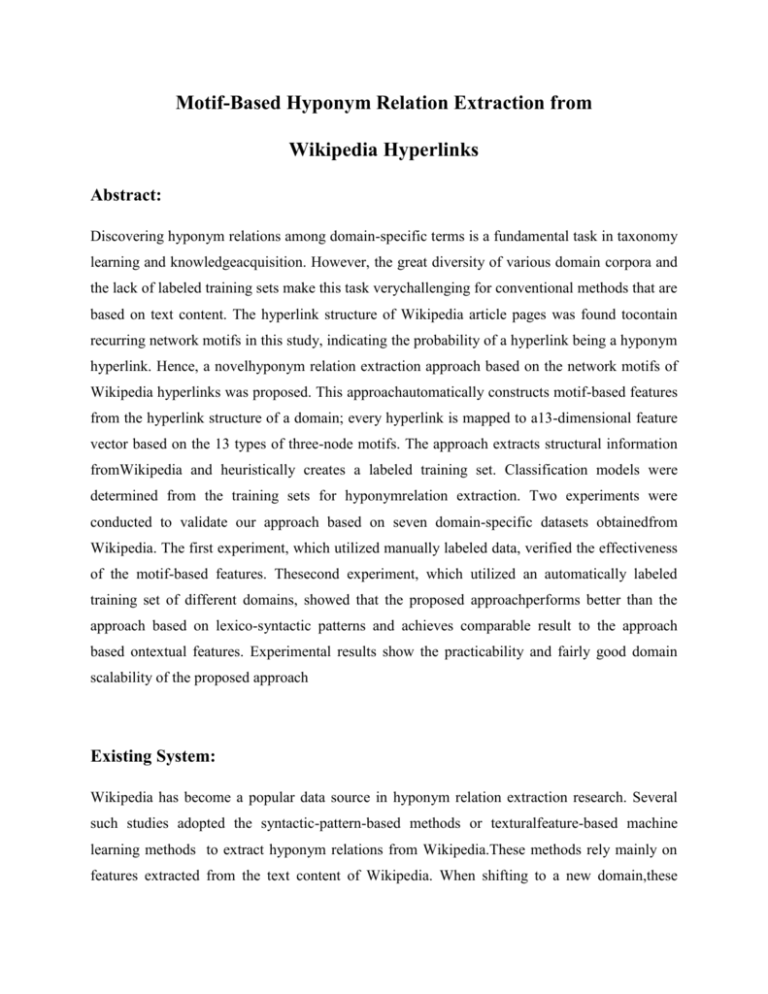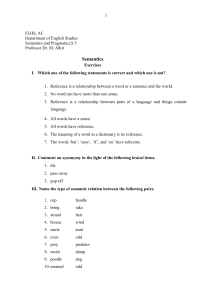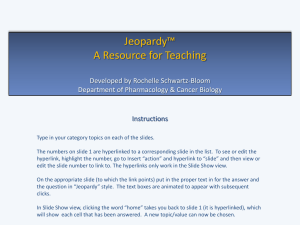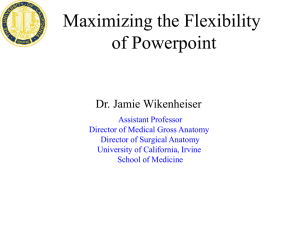- Krest Technology
advertisement

Motif-Based Hyponym Relation Extraction from Wikipedia Hyperlinks Abstract: Discovering hyponym relations among domain-specific terms is a fundamental task in taxonomy learning and knowledgeacquisition. However, the great diversity of various domain corpora and the lack of labeled training sets make this task verychallenging for conventional methods that are based on text content. The hyperlink structure of Wikipedia article pages was found tocontain recurring network motifs in this study, indicating the probability of a hyperlink being a hyponym hyperlink. Hence, a novelhyponym relation extraction approach based on the network motifs of Wikipedia hyperlinks was proposed. This approachautomatically constructs motif-based features from the hyperlink structure of a domain; every hyperlink is mapped to a13-dimensional feature vector based on the 13 types of three-node motifs. The approach extracts structural information fromWikipedia and heuristically creates a labeled training set. Classification models were determined from the training sets for hyponymrelation extraction. Two experiments were conducted to validate our approach based on seven domain-specific datasets obtainedfrom Wikipedia. The first experiment, which utilized manually labeled data, verified the effectiveness of the motif-based features. Thesecond experiment, which utilized an automatically labeled training set of different domains, showed that the proposed approachperforms better than the approach based on lexico-syntactic patterns and achieves comparable result to the approach based ontextual features. Experimental results show the practicability and fairly good domain scalability of the proposed approach Existing System: Wikipedia has become a popular data source in hyponym relation extraction research. Several such studies adopted the syntactic-pattern-based methods or texturalfeature-based machine learning methods to extract hyponym relations from Wikipedia.These methods rely mainly on features extracted from the text content of Wikipedia. When shifting to a new domain,these methods require new syntactic patterns to be learned or new training samples to be manually constructed, which usually entail high labor costs. In addition, these methods do not fully utilize the topological structure of hyperlinks in Wikipedia article pages.This paper explores the connectivity patterns in the WAGs to discover the hyponym relations based on the two observations below.Our first observation is that the WAG of a domain contains many frequently recurring connectivity patternsknown as network motifs . Network motifs (abbreviated to motifs) appear much more frequently in a specific network than in randomized networks. They are suggested to be the fundamental building blocks carryinginformation-processing functions . Furthermore, we find that hyponym hyperlinks are more likely to appear in some types of motifs than in other types . Based on these observations, we extract motif based features for classification model learning. The trained model is used to classify different types of hyperlinks. Therefore, the construction of features from local topological hyponym relation extraction is the key problem in this study. Second, we find that the features extracted from network motifs are closely related to the corresponding domain specific article graph. The classification model acquiredfrom the motif based features for one domain cannot be directly applied to another domain in hyponym relation extraction. For this reason, generating training sets with minimal human involvement for extraction in the different domains is a challenging task. Proposed System: To solve the two problems mentioned above, this paper proposes a novel extraction approach called MOtif-based hyponym Relation Extraction (MORE) for hyponym relation discovery. MORE focuses on hyponym relation discovery from academic domains in Wikipedia, such asDatamining, Classical mechanicsandMicrobiology. What MORE does includes: 1) automatically construct motif-based features from theWAG of a domain; 2) extract structural information from Wikipedia andheuristically label the training set of the domain based onthe extracted structural information; 3) learn the classification model from the training sets to discover hyponym relations.We conducted two experiments to validate the approach with seven domain-specific datasets from Wikipedia. One experiment used manually labeled data. The other used automatically labeled data. The experimental results show that the proposed three-node motif-based approach outperforms the approach based on lexico-syntactic patterns and is on a par with the approach based on textual features in terms of F1 score. We find that the local connectivity patterns of Wikipedia hyperlinks are effective features in extracting hyponym relations. Three-node motifs are utilized in MORE to construct the discriminative features of the classification algorithms. The effectiveness of the three-node motif-based features is evaluated based on seven real-world Wikipedia datasets. Modules: Hyperlink: Hyperlinks are the programmatic commands to 'jump-to-another-page' in your web browser. Every web page is filled with dozens of hyperlinks, each sending you to some related web page or picture/file. In computing, a hyperlink is a reference to data that the reader can directly follow either by clicking or by hovering or that is followed automatically. A hyperlink points to a whole document or to a specific element within a document. Hypertext is text with hyperlinks. A software system for viewing and creating hypertext is a hypertext system, and to create a hyperlink is to hyperlink (or simply to link). A user following hyperlinks is said to navigate or browse the hypertext. Network motif:All networks, including biological networks, social networks, technological networks (e.g., computer networks and electrical circuits) and more, can be represented as graphs, which include a wide variety of subgraphs. One important local property of networks are so-called network motifs, which are defined as recurrent and statistically significant sub-graphs or patterns. Motifs, sub-graphs that repeat themselves in a specific network or even among various networks, would be consistent with the tenets of evolutionary theory. Each of these sub-graphs, defined by a particular pattern of interactions between vertices, may reflect a framework in which particular functions are achieved efficiently. Indeed, motifs are of notable importance largely because they may reflect functional properties. Domain-specific language: A domain-specific language (DSL) is a computer language specialized to a particular application domain. This is in contrast to a general-purpose language (GPL), which is broadly applicable across domains, and lacks specialized features for a particular domain. Hyponym relation extraction: This approach automatically constructs motif-based features from the hyperlink structures of a domain; every hyperlink is mapped to a 13-dimensional feature vector based on the 13 types of three-node motifs. The approach extracts structural information from Wikipedia and heuristically creates a labeled training set. Classification models were determined from the training sets for hyponym relation extraction. Hardware Configuration: Processor Speed - Pentium –IV 1.1 Ghz RAM - 256 MB(min) Hard Disk - 20 GB Key Board - Standard Windows Keyboard Mouse - Monitor Two or Three Button Mouse - SVGA Software Configuration: Operating System : Windows XP Programming Language : JAVA Java Version : JDK 1.6 & above.






